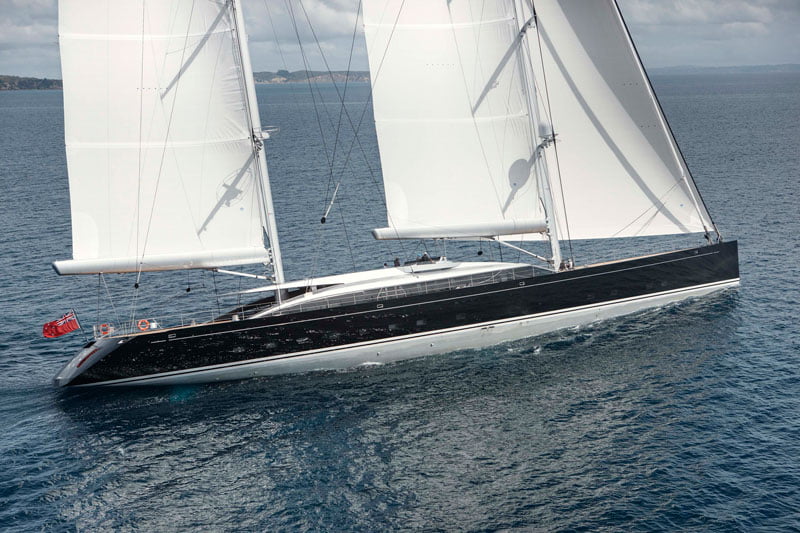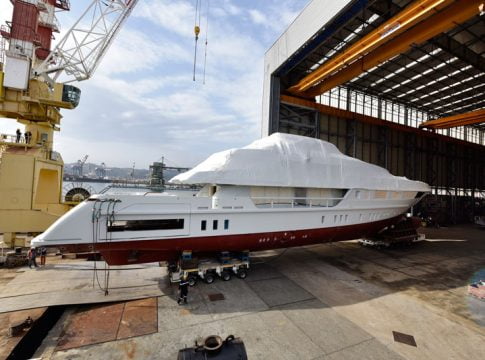Fresh off the back of an exhilarating Caribbean regatta season, where an impressive number of Philippe Briand yachts took podium places, the designer considers the new trend that puts glass firmly in the spotlight in sailing yacht design.
For decades Philippe Briand’s studio has been a focal point for innovative, technical yacht design. It is a place where trends – strongly based on research – are made and innovations are conceived and refined; the use of glass in sailing yacht design is no exception.
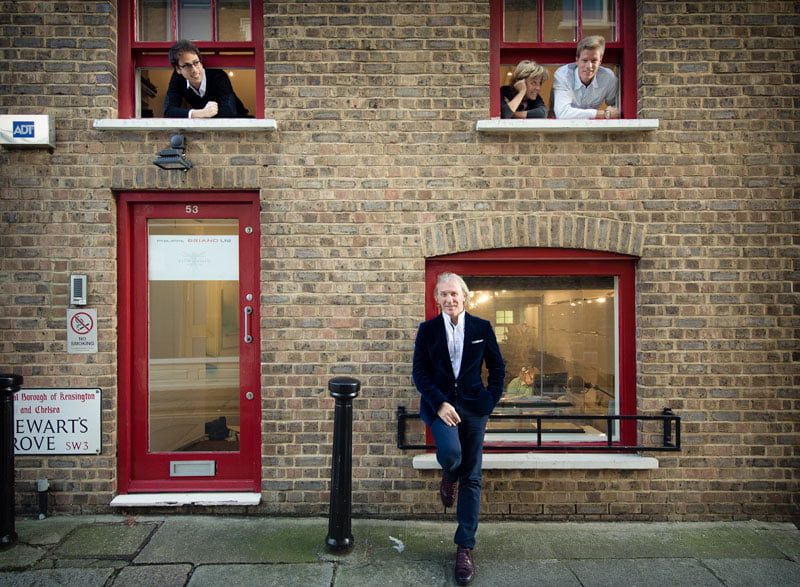
Since first introducing curved superstructure windows to his designs over 15 years ago, the possibilities offered through the advancement of glass manufacturing technology have immensely increased the potential applications available for this versatile material.
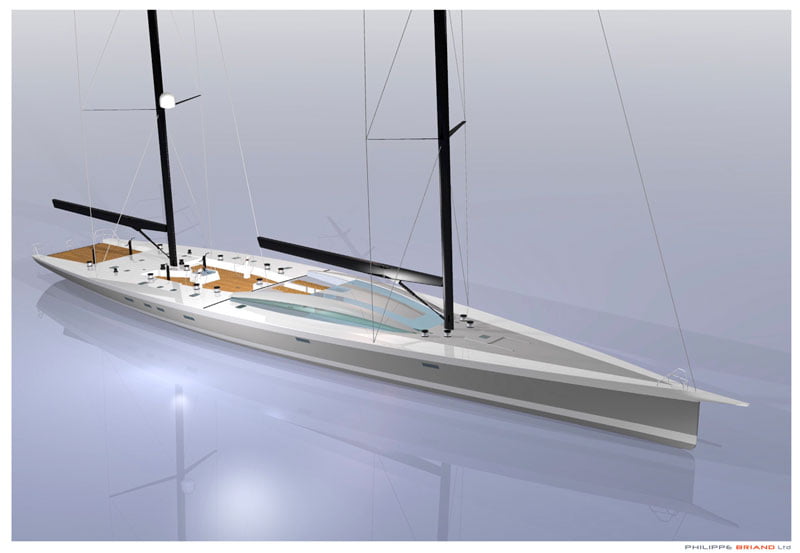
Briand ensures he keeps firmly abreast of these developments: “I spend a lot of time with glass suppliers, helping them to understand the specific requirements of using glass on board any yacht, let alone a performance sailing superyacht like Vertigo or Mari Cha IV (actual Samurai). This continual dialogue ensures that my concepts are always on the cutting edge of what is possible.”
The Interior
The fashion for glass superstructures is gaining traction in yacht design circles. In coming years, the majority of new launches will have a glass coach roof at the very least, and Philippe Briand is at the forefront of this design trend with his sleek, modern concepts including the 130’ Philippe Briand design pictured below. He credits the material’s continuing growth in popularity to its flexibility, as well as the aesthetic appeal of the futuristic shapes that glass can create.
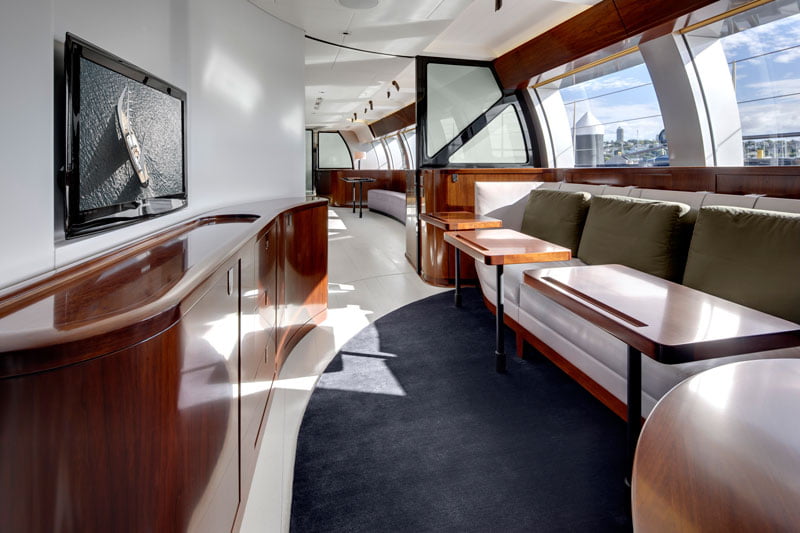
The application of glass in a sailing environment in particular is interesting; the ability to bring the drama and beauty of the exterior inside adds a new dimension to the atmosphere within. Glass can offer near-360-degree panoramic views of the waterline, as well as the uniquely dramatic perspective of a superyacht mast from its base.
As Briand hears from clients very regularly, owners want their yachts to let in more natural light and provide them with a greater connection with the environment outside. Clever use of glass gives the ‘wow’ factor to any yacht design, creating beautiful, elegant shapes, while also offering an opportunity to embrace new technologies at the same time.
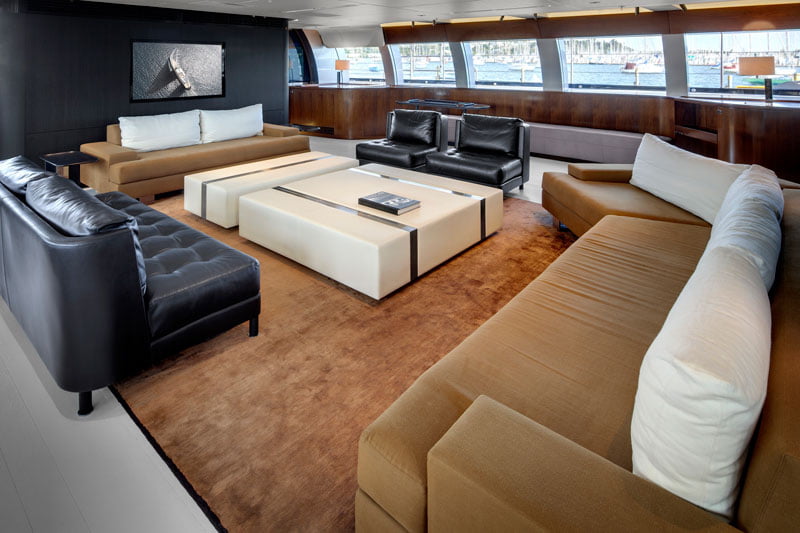
The Technology
Though the aesthetic of his designs and concepts are key, Briand is a true yachtsman, with high- performance design in his heart. The practicality of using glass is therefore always at the front of his mind, and the ability to walk on top of these structures, unhindered, is of paramount importance. A compound security glass is often used, which is created by using two or more plies of chemically toughened glass. This glass is approved by both Lloyd’s Register and ABS, and accepted by all major classification societies.
As larger and larger areas of the superstructure can be built entirely from glass, the team at Philippe Briand has been exploring the use of compound security glass with built-in multifunctional sensor technology, which allows early detection of any glass damage. Here, integrated sensors permanently measure the state of the panes and the information is passed over to the management and alarm systems.
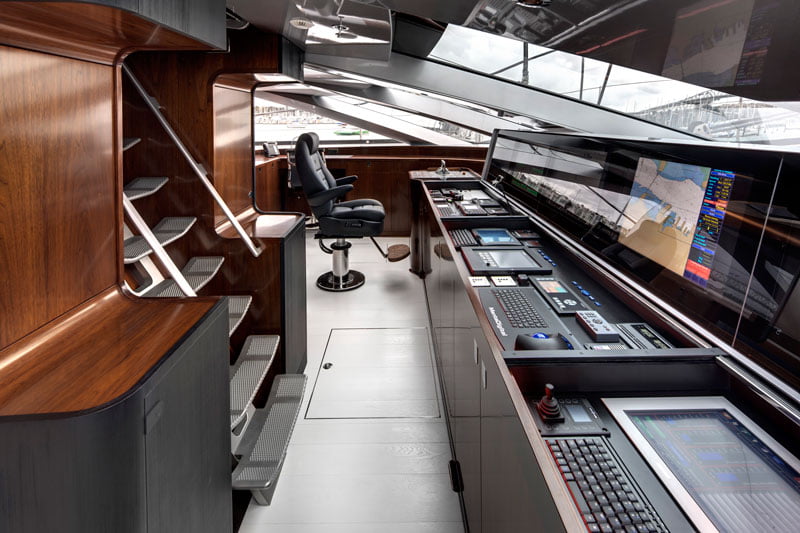
Another technology that has been developed is particularly crucial when using glass in the interior of vessels. You can now, with the switch of a button, create a private space on board by turning clear glass opaque. For use in the guest and owner areas, and as clever dividers throughout, this technology stylishly and practically creates virtual space on board.
All these factors ensure that the design applications of glass in luxury yachts are constantly evolving, cementing its increasing use as a trend that we will be seeing grace the world’s favourite cruising grounds for years or decades to come.


